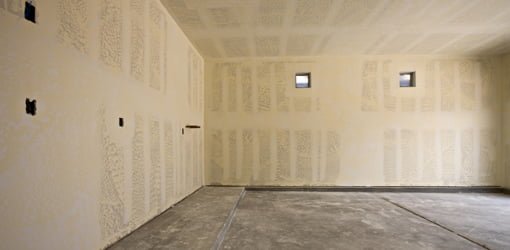Toxic Chinese Drywall: Is It in Your Home?
By: Danny Lipford

As if homeowners didn’t have enough to worry about, they can now add toxic gases emitted by imported Chinese drywall to the list. Increasing evidence indicates that some of the over 500 million pounds of drywall shipped to the U.S. from China during the housing boom following Hurricane Katrina contained potentially toxic materials that can release gases believed responsible for damaging homes and causing health problems.
Risks to Health and Home
Some homeowners with Chinese drywall report a strong sulfur smell, similar to that of rotten eggs, permeating their homes. Health problems are said to include headaches, respiratory ailments, irritated eyes, and nosebleeds. In addition, the toxic gas is thought to be responsible for corroding copper and tarnishing silver, resulting in the failure of everything from computers and TVs to air conditioners and refrigerators. Even electrical wiring and switches have been affected, as have the silver on mirrors and jewelry.
When Imported
According to estimates, approximately 20 million square feet of Chinese drywall has been imported into the U.S. since 2004. It’s thought to have been installed in somewhere between 50,000 to 100,000 homes. Problems have been reported so far in over a dozen states including Alabama, Arizona, California, Florida, Georgia, Louisiana, Maryland, Michigan, Mississippi, Nevada, New Jersey, New York, North Carolina, Ohio, South Carolina, Texas, and Virginia. Homeowners in Florida have been the hardest hit, with over 140 complaints received and several class action lawsuits filed.
Tests Conducted

Corroded copper in refrigerator.
Tests conducted for the Florida Department of Health, found small amounts of the chemical strontium sulfide in samples of imported wallboard. When combined with humid air, trace amounts of the toxic gases hydrogen sulfide, carbon disulfide, and carbonyl sulfide were released.
Tests conducted on imported Chinese drywall by the Environmental Protection Agency (EPA) found sulfur levels from 83 to 119 parts per million (ppm). Sulfur was not detected in the samples of U.S. made drywall that were tested.
In addition, strontium was found at levels of 2,570 to 2,670 ppm in the imported drywall and 244 to 1,130 ppm in the U.S. manufactured drywall. Two organic compounds usually associated with acrylic paint were detected in the imported drywall but not found in U.S. made drywall.
Products Involved
Chinese drywall made by 20 different companies was imported into the U.S. between 2004 and 2008. Several of them—including Knauf Plasterboard Tianjin (KPT), Knauf Gips (KG), and Taishan Gypsum Co.—have been the focus of the lawsuits that have been filed to date.
What to Do
It’s impossible to determine the origin or manufacturer of installed drywall without removing sections of it, and even then, drywall is often poorly marked on the back or not marked at all. Since some imported drywall doesn’t appear to cause a problem, the best way to know if your house is at risk is the sulfur smell and by checking the copper in appliances for signs of corrosion.
Tests on samples can then be conducted to confirm the presence of contaminants. If your drywall does have a problem, there is little that can be done to alleviate it other than tearing out all the drywall out and replacing it.
Most of the defective Chinese drywall was bought in bulk by contractors and was not sold at major national home improvement chains. Many of the top U.S. manufacturers—including Georgia Pacific, National Gypsum, American Gypsum, and USG—have stated that they do not import drywall from China. While some companies label their drywall as made in the U.S., others do not give a country of origin. When in doubt, try contacting the drywall manufacturer directly.
December 15, 2011 Update
A settlement has been announced with Knauf Plasterboard Tianjin Co., one of the suppliers of Chinese made drywall, to repair over 4,000 homes that have problems stemming from their drywall. Claims against other companies involved with tainted Chinese drywall are still not settled. You can read more at
Chinese Drywall Maker to Pay Homeowners to Settle Contamination Lawsuits.
Chinese Drywall Maker to Pay Homeowners to Settle Contamination Lawsuits.
Further Information
- Drywall Information Center (U.S. Consumer Product Safety Commission)
- ChineseDrywall.com
- Is Drywall the Next Chinese Import Scandal? (Time)
- Testing Revels What’s in Walls (Sarasota Herald Tribune)
- Drywall Problems May Just Be Beginning (Sarasota Herald Tribune)
- Drywall from China Blamed for Problems in Homes (USA Today)
- Chinese-made Drywall Ruining Homes, Owners Say (CNN)
- Drywall Has Material That Can Emit Corrosive Gas (CNN)
- China Blamed for Homeowners’ Nightmare (CBS News)
- Drywall Frequently Asked Questions (Florida Department of Health
No comments:
Post a Comment
Comments always welcome!